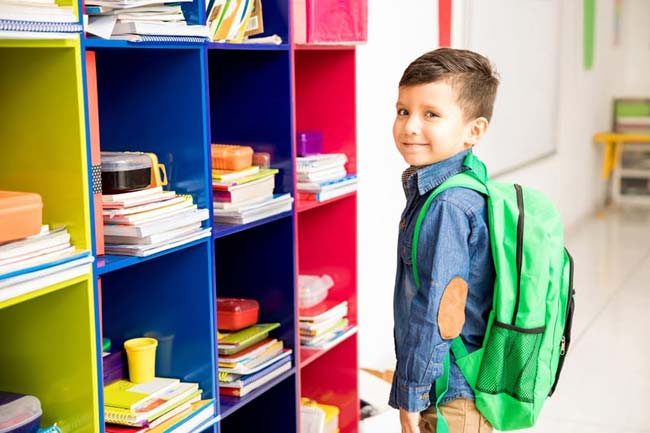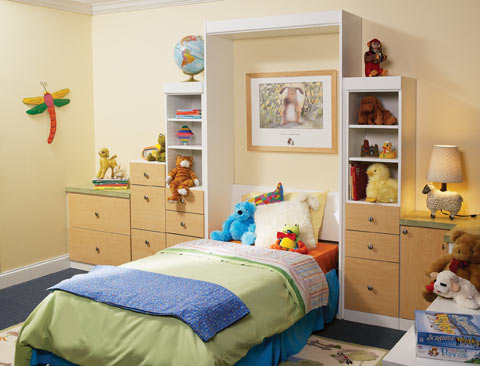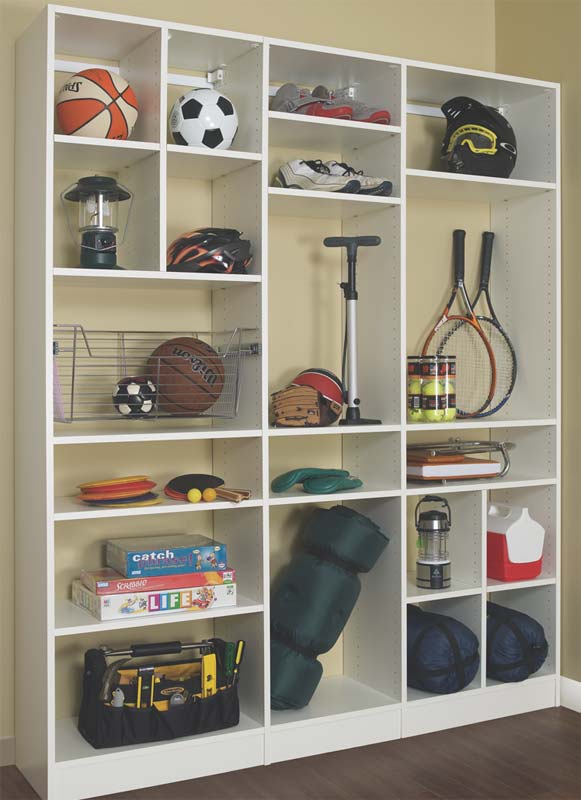
Teaching kids to get organized and actually getting them to stay organized can be…a challenge. Especially when you don’t have the right tools and tips to make organizing fun. Luckily, we’re here to show you how to organize your kids’ room and keep it that way.
Sound like a fantasy? Helping your kids get organized can be fun. No, really, it can be.
Teaching Kids to Be Organized
If being a parent has taught you anything, it’s that saying something just once doesn’t make it stick. Making organization a fun part of the daily routine is the first step in helping kids get organized. We’re going to cover the How Tos in the next section, but first, let’s get in the right frame of mind. Helping kids get organized can be a daunting task,whether they’re 6 or 16.
We’ve worked with families of all sizes and we’ve discovered a few tips and tricks to teaching your kids to be organized. The first place to start? Their bedroom. Once you master organizing their space, it makes helping them stay neat in the rest of the house that much easier. Here are some tips on how to get started:
- Make a game plan. Having an idea of what you want to do is a great place to start. Draw a quick picture of the space (you don’t have to be an architect to make this work!) without any of the furniture in it. This will help you visualize the possibilities. Maybe the bed has always been in that one corner and it’s just stuck in your brain as living there forever. Having a clean slate to look at opens your brain up to new possibilities.
- Create zones. You’ve probably heard the term “zone” before. It’s just a way of helping you think of a room as a place where more than one activity can happen. Crafts, studying, reading, tea parties, video game marathons—each of these activities has their own set of tools and needs. Think about the best places in the room for each of these and plan to organize accordingly.
- Get kiddo approval. Once you have your idea sketched out, show it to your child to get their input on your ideas. This not only makes them feel like you value their opinion, but it helps them get excited about being involved in the project—it goes from your project to our project (which can also mean they’re more willing to keep it clean)!
- Make time. We don’t always have time to get projects done all at once, but this might have to be the one exception. Having your child’s room in disarray can cause stress (for you and your children!), so take a weekend day or a day when you and your kiddo have no other plans and get it all knocked out! It will be hard work, but the end result will be well worth it!
Pre-planning goes a long way when it comes to a big task like helping your kids get organized, so give yourself a leg up and get those plans going!
How to Organize Your Kids Room
Now that you have your game plan ready, it’s time to actually do the work. Make sure your kids are involved in this process as well, it can help things go faster and help take the burden off of you to do everything. If you have little ones, think of tasks they can do like separating their blocks from their stuffed animals, or going through their books to see if there are any they don’t look at anymore.

The bed. Parents know that there are often scarier things under a kid’s bed than monsters—food wrappers, school papers, that one shoe that seemed to have disappeared into the void—needless to say, if you haven’t experienced that moment when you dare to look under your child’s bed then you’re very lucky indeed! One of the most popular solutions we make for our clients of all ages? Murphy beds. Not only can a Murphy bed fold up to create more floor space, it can also be made with a built-in desk option (even more space?! It’s not a dream). Murphy beds not only eliminate the Under the Bed Void, they also provide a simple solution to creating more space for your kids to play, dance, wrestle, or daydream.

The closet. Behind closed doors a kid’s closet can become an unruly wilderness. Shirts on the floor, shorts in the shoe rack, shoes MIA—you’ve seen it. Making sure that the closet makes sense for your kids also helps make sure they keep it clean (or, at least, don’t have an excuse not to keep it clean). Making hanging bars easy to reach, shoes easy to place, and pants easy to grab means less mess and less time getting ready on already busy mornings. Save time by creating a custom closet space for your kiddo. Instead of relying on a one-size-may-fit-all option, a custom closet can help kids get organized by making sure everything has a place . Shelves, shoe caddies, drawers, and baskets all together. Tutus in one bin and Spiderman costumes in another and everything else in perfect, organized harmony? Yes, please.
The Rest. Each child has their own needs and hobbies, so making sure their space accommodates that means they can keep their things organized and, to some extent, in their room instead of strewn about the house. Some common areas: study, reading nook, gaming center, vanity, and dress up area. Make sure the space you create with them fits their needs. A smaller kid may want a comfy bean bag chair while an older tween or teen may want a more sophisticated chair. Gamers may want a specific set up and readers may need just the right lamp. Make sure to utilize shelves for vertical storage as building up keeps things off of the floor and can provide additional storage for off season items (coats or boots) or toys that require supervision (smaller building blocks or board games).
Helping Kids Stay Organized
One of the biggest mistakes parents make in helping their kids get organized? They make it too complicated. You may love keeping things neat and tidy, but your kids may see it as time spent not doing the things they really enjoy (like making more messes).
Now that you and your kids have organized their space, it’s time to help them get organized and stay that way. Here are a few suggestions for getting things started:
- Checklists. Kids of all ages can interact with a checklist, whether it’s pictures or written word, checklists are a great way to remind kids of their chores and their daily schedules. Create checklists for AM and PM chores like picking out clothes for the next day, making the bed, cleaning up toys, reading, etc. Some kids need a visualization of their tasks, so they know what to do. A quick Google search will yield a ton of themed or generic examples! From Fortnite to My Little Pony—there are checklists for all ages and interests.
- Calendars. Summer camp, after school activities, play dates, sleep overs, concerts, games…the list goes on and on. Keeping all of their activities on a calendar gives them a quick, at-a-glance view of their day, week, and month. It also helps you remember what they need to do when so no balls (literal or otherwise) get dropped. Have your child pick out a calendar that they like or make one together. Whiteboards also work but be aware that smaller hands can (and will) touch the board and items may be erased accidentally.
- Rewards. Helping kids get organized isn’t always as easy as an organized space and a pat on the head. In order to get kids into the habit of keeping things neat and tidy, you may want to think about a reward Not every chore needs a reward, some things are things kids just need to do but other, larger tasks may need incentives. Have a technophile? Assign minutes to chores and tasks so they earn their screen time—the bigger the chore, the more minutes you get. A reader might be enticed by a points system that culminates in a trip to the book store or a new book download. A film buff may earn punches on a card that ends up with a trip to see a movie.
Helping kids get organized not only increases your quality of life, but theirs too. Kids who learn at a young age to keep things neat and tidy will likely keep those habits well into adulthood, setting them up for success and that Parent of the Year award you’ve been waiting on.
Do you have any tips for helping kids get organized? Be sure to let us know!



